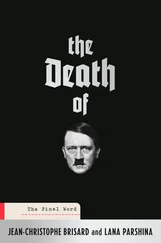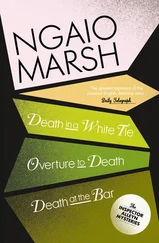The generals of the Reichswehr were understandably protective of its traditions and prerogatives; Röhm’s increasingly urgent and imperious designs alarmed them and confirmed their worst fears. As if to bring matters to a head, in the fall of 1933 Röhm incorporated another right-wing paramilitary organization into the SA, the Stahlhelm (“steel helmet”), which had originally been founded as a First World War veterans’ group. At a single stroke he raised the strength of his domestic army to nearly three million men. At the same time he began building the SA into a state within the state, enhancing its military aura, creating a network of offices to oversee a little of everything-including paramilitary sports, gymnastics, and life in the universities-setting up an SA police force and judicial system, and establishing liaisons to industry, government, and the press. Despite his strident, relentless insistence on the unsatisfied demands of his followers, Röhm continued to have confidence in Hitler and considered him merely indecisive and susceptible to “stupid and dangerous” characters like Göring, Goebbels, Himmler, and Hess, who were blocking the way to the real revolution and the dawn of an SA state. 10
Hitler probably basically agreed with Röhm’s ideas. The Führer certainly shared his distaste for the officer caste, with its monocles and starchy mannerisms. If Hitler had exhibited any support for Röhm’s demands at this juncture, however, he would have not only aroused the animosity of the Reichswehr and President Hindenburg but also jeopardized his alliance with the conservatives, undermined his basic tactic of “legal revolution,” endangered the incipient economic recovery, and possibly even invited intervention by foreign powers. In short, supporting Röhm would have sabotaged his entire strategy for seizing power. At least for the moment, Hitler remained reliant on the expertise of the senior Reichswehr officers as he set about the pressing military tasks he had designated for himself, above all the rebuilding of the army.
Nevertheless, Hitler did not want to dismiss Röhm’s demands out of hand. He even quietly encouraged the SA leader on the theory that all obstacles put in the path of the Reichswehr would ultimately make it more amenable to his will. At a conference of army commanders in December, Blomberg expressed great concern about “attempts within the SA to establish an army of its own.” Six weeks later he received a memorandum from Röhm in which the SA chief flatly declared “the entire realm of national defense falls within the purview of the SA.” The next day, as if not wishing to leave the slightest doubt about his plans, Röhm added comments that the generals took as an open declaration of war: “I now consider the Reichswehr to be only a military training school for the German people. The conduct of war and therefore also the mobilization [of troops] are henceforth the concerns of the SA.” 11
Blomberg and Reichenau responded by insisting on “a clear decision.” Just as Hitler had expected, they made numerous attempts at accommodation to curry favor with him. A preliminary concession had already been made. The commander in chief of the army, Kurt von Hammerstein-Equord, was an aloof, sarcastic man, who punctuated his principles with cutting displays of disregard. 12He made no secret of his aversion to the new rulers, even speaking of them in wider circles as “that gang of criminals” or “those filthy pigs,” the latter an allusion to the homosexual tendencies of the SA leaders. As a result, more and more of Hammerstein’s responsibilities were assumed by Blomberg, for whom the duties came more easily than for Hammerstein, who had neither talent nor desire for intrigue and insisted on straight dealings. By the spring of 1933 it was already being rumored that the commander in chief of the army would last, at most, until the summer. Though somewhat passive, Hammerstein ultimately held on until the fall before submitting his resignation. Within the officer corps, hardly an eyebrow was raised. Things finally seemed to be improving, and “everyone was happy to be rid of Hammerstein.” 13Blomberg even went so far as to order his department head in the ministry to forbid any further contacts with the former army commander in chief.
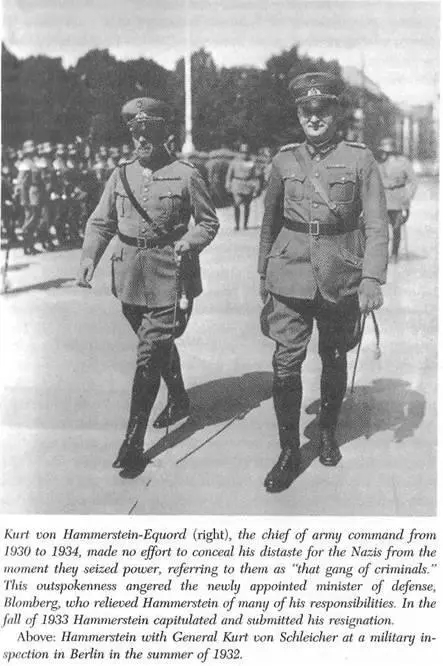
This initial attempt to appease Hitler was soon followed by a second. Just a few days after the commanders’ conference in early February, Blomberg ordered that Nazi insignia henceforth be the official symbol of the armed forces. Somewhat later he mandated that the officer corps adopt the so-called Aryan paragraph of the Act to Restore a Professional Public Service of April 7, 1933, requiring, among other things, that civil servants of non-Aryan descent be retired. 14Shortly thereafter Blomberg issued orders making “sympathy with the new state” the decisive criterion for promotions and, still at his own initiative, introduced a program of “political training” for soldiers. Hitler, who was well versed in reading omens, may have viewed these gestures as the first sign of impending capitulation, despite all the grumbling about them in the Reichswehr.
To entice the army further down this path Hitler himself offered a concession: at the army’s Bendlerstrasse headquarters on February 28, 1934, Röhm was forced to sign a paper in Hitler’s presence that confirmed all the prerogatives of the Reichswehr and delegated only supporting military-training duties to the SA. The dispute between the two military forces was then officially washed away in a “reconciliatory breakfast,” at which, according to Blomberg, the Führer delivered a “stirring” appeal to keep the peace.
Hardly had the ceremony ended, the table been cleared, and the guests departed, however, before Röhm exploded in a tirade of rage and frustration. He called Hitler a “ridiculous corporal,” accused him of disloyalty and shouted, “If it can’t be done with Hitler, we’ll do it without him!” One of the witnesses, SA leader Viktor Lutze, scurried away from the champagne breakfast in the Huldschinsky Palace, Röhm’s headquarters in Berlin, to Hitler’s camp at Berchtesgaden to report what had happened. The Führer curtly informed him, “We’ll just let this ripen.” 15
* * *
In the meantime Röhm carried on as if the agreements, assurances, and solemn handshakes of February 28 had never occurred. He purchased arms abroad, displayed SA muscle in gigantic military parades, held public flag-consecration ceremonies and reviews of his troops, and rode, mounted high on his steed, before the brown-shirted hordes. Still, Hitler waited, for the balance that had been achieved seemed to hold the SA and the Reichswehr in check, each in its own way. Finally, it was the many enemies Röhm had accumulated in the course of his career who decided to pounce, beginning with such people as Rudolf Hess and Martin Bormann in party headquarters and extending all the way to the SA division heads. Most important was Hermann Göring, who felt driven into an alliance that he would have preferred to avoid. He joined forces with Heinrich Himmler, the chief of the SS, turning control of the Gestapo over to him. In aligning himself with Himmler he was also taking on Himmler’s assistant, Reinhard Heydrich, who had always struck him as eerie and sinister. By early May Heydrich had assumed responsibility for the operation against Röhm.
The change in the atmosphere was immediately palpable, as a veritable campaign was launched, complete with intrigue, rumors, and hit lists. Amid all the planning and plotting, the gray shadow of an officer’s uniform appeared time and again. A vague aura of unease began to spread, as if Germany was once again coming to its senses and beginning soberly to assess the changes that had taken place, whose true nature had been veiled by the inebriating spectacle of parades and by the Führer’s speeches. Many of the intolerable conditions of the Weimar Republic had indeed disappeared, but only to be replaced by new horrors: the persecution of helpless minorities, a muzzled press, conflict with the churches, mounting suspicion of Germany from abroad, and much more. A showdown with the SA loomed nearer, heightening apprehensions, and the Young Conservatives, another group interested in sharpening antagonisms, begun to make its presence felt. Egged on by certain of its members in his entourage, Vice-Chancellor Papen now sensed an opportunity to emerge from the background into which he had been forced and to steer Germany back to being an orderly nation. A revolt of the SA was rumored to be imminent and could perhaps be used, he calculated, to induce President Hindenburg to declare a state of emergency. Papen felt encouraged by the president himself, who commented as he set off in early June for a vacation on his Neudeck estate in East Prussia, “Things are going badly, Papen. Try to restore order.” 16
Читать дальше
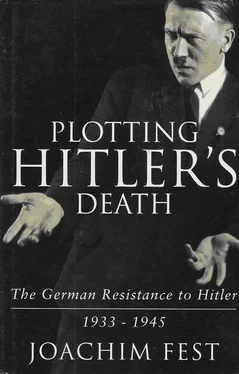



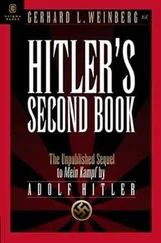
![Traudl Junge - Hitler's Last Secretary - A Firsthand Account of Life with Hitler [aka Until the Final Hour]](/books/416681/traudl-junge-hitler-s-last-secretary-a-firsthand-thumb.webp)
